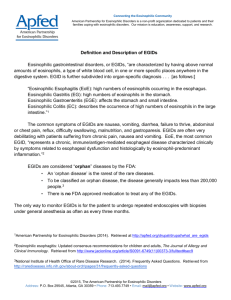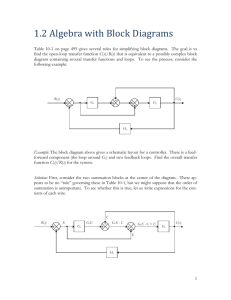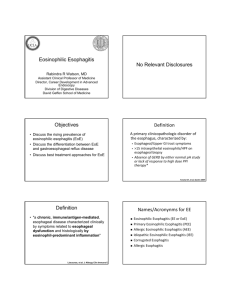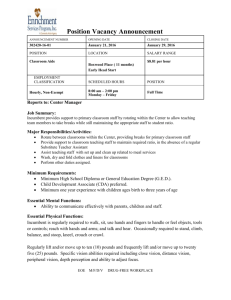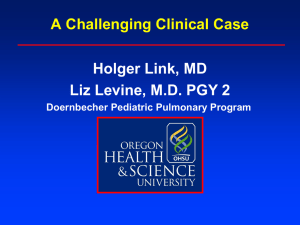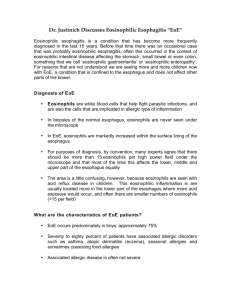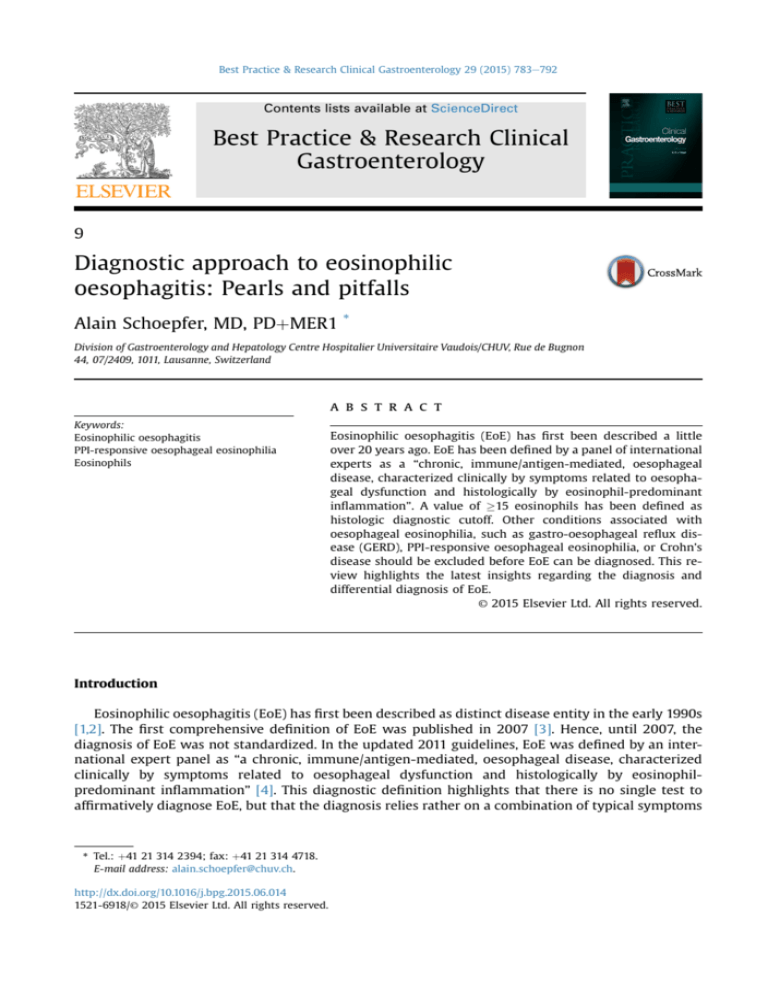
Best Practice & Research Clinical Gastroenterology 29 (2015) 783e792
Contents lists available at ScienceDirect
Best Practice & Research Clinical
Gastroenterology
9
Diagnostic approach to eosinophilic
oesophagitis: Pearls and pitfalls
Alain Schoepfer, MD, PDþMER1 *
Division of Gastroenterology and Hepatology Centre Hospitalier Universitaire Vaudois/CHUV, Rue de Bugnon
44, 07/2409, 1011, Lausanne, Switzerland
a b s t r a c t
Keywords:
Eosinophilic oesophagitis
PPI-responsive oesophageal eosinophilia
Eosinophils
Eosinophilic oesophagitis (EoE) has first been described a little
over 20 years ago. EoE has been defined by a panel of international
experts as a “chronic, immune/antigen-mediated, oesophageal
disease, characterized clinically by symptoms related to oesophageal dysfunction and histologically by eosinophil-predominant
inflammation”. A value of 15 eosinophils has been defined as
histologic diagnostic cutoff. Other conditions associated with
oesophageal eosinophilia, such as gastro-oesophageal reflux disease (GERD), PPI-responsive oesophageal eosinophilia, or Crohn's
disease should be excluded before EoE can be diagnosed. This review highlights the latest insights regarding the diagnosis and
differential diagnosis of EoE.
© 2015 Elsevier Ltd. All rights reserved.
Introduction
Eosinophilic oesophagitis (EoE) has first been described as distinct disease entity in the early 1990s
[1,2]. The first comprehensive definition of EoE was published in 2007 [3]. Hence, until 2007, the
diagnosis of EoE was not standardized. In the updated 2011 guidelines, EoE was defined by an international expert panel as “a chronic, immune/antigen-mediated, oesophageal disease, characterized
clinically by symptoms related to oesophageal dysfunction and histologically by eosinophilpredominant inflammation” [4]. This diagnostic definition highlights that there is no single test to
affirmatively diagnose EoE, but that the diagnosis relies rather on a combination of typical symptoms
* Tel.: þ41 21 314 2394; fax: þ41 21 314 4718.
E-mail address: alain.schoepfer@chuv.ch.
http://dx.doi.org/10.1016/j.bpg.2015.06.014
1521-6918/© 2015 Elsevier Ltd. All rights reserved.
784
A. Schoepfer / Best Practice & Research Clinical Gastroenterology 29 (2015) 783e792
and characteristic histologic findings (Fig. 1). Of note, several differential diagnoses associated with
oesophageal eosinophilia have to be excluded before EoE diagnosis can be established (Table 1).
Normal values of eosinophils in the gastrointestinal tract
Under normal conditions, the oesophageal epithelium is devoid of eosinophils. As such, every
accumulation of eosinophils in the oesophageal mucosa can be described as oesophageal eosinophilia.
However, eosinophils can be found in other segments of the gastrointestinal tract under normal
conditions. A significant increase in the number of eosinophils from the oesophagus to the right colon
can be observed (mean ± SD/mm2: 0.07 ± 0.43 for the oesophagus, 12.18 ± 11.39 for the stomach, and
36.59 ± 15.50 for the right colon), compared with a decrease in the left colon (8.53 ± 7.83) [5]. Of note,
eosinophil values in the different segments of the gastrointestinal tract were not different when Japanese were compared to Japanese Americans and Caucasians [5]. Knowledge of these normal values is
important to judge if a patient has isolated EoE or oesophageal eosinophilia accompanied by an
eosinophilic gastro-enteritis.
Fig. 1. The diagnosis of EoE is based on a combination of typical symptoms and marked oesophageal eosinophilia (marked in dark
grey).
Table 1
Differential diagnosis of oesophageal eosinophilia.
Diseases associated with oesophageal eosinophilia
Eosinophilic oesophagitis
GERD
PPI-responsive oesophageal eosinophilia
Eosinophilic gastrointestinal diseases
Oesophageal infections (e.g. fungal, viral, parasitic)
Crohn's disease
Celiac disease
Achalasia
Hypereosinophilic syndrome
Pemphigus
Vasculitis
Connective tissue diseases
Drug hypersensitivity
Graft versus host disease
A. Schoepfer / Best Practice & Research Clinical Gastroenterology 29 (2015) 783e792
785
Definition of eosinophilic oesophagitis
The first diagnostic criteria for EoE were published by a consensus committee in 2007, followed by a
revision in 2011 [3,4]. The most recent guideline on EoE diagnosis and management was published in
2013 and proposed the following diagnostic criteria: [6].
Symptoms related to oesophageal dysfunction
Eosinophil-predominant inflammation in oesophageal biopies with a peak eosinophil value of 15
eosinophils per high power field (magnification 400)
Mucosal eosinophilia is isolated to the oesophagus and persists after two months of treatment with
a proton pump inhibitor (PPI)
Secondary causes of oesophageal eosinophilia have been excluded
A clinical and histologic response to treatment with swallowed topical steroids or diet elimination
supports the EoE diagnosis but is not required
Typically, patients undergo first oesophageal biopsy sampling either related to endoscopic workup
of dysphagia, thoracic pain, or a food bolus impaction. Most patients with these key symptoms will not
be under therapy with PPI. Patients with documented oesophageal eosinophilia should then undergo
an eight-week PPI treatment with single-or double standard dose. The duration of eight weeks has
been recommended in the diagnostic guidelines based on the fact that erosive or ulcerative reflux
oesophagitis can take up to eight weeks for endoscopic healing [3,4,6]. Patients should then undergo
again oesophageal biopsy sampling when still being under PPI-therapy (Fig. 2) [3,4,6]. In case of EoE,
oesophageal eosinophilia and symptoms of oesophageal dysfunction will persist. In case of GERD,
reflux-associated symptoms and oesophageal eosinophils will disappear. In case of a PPI-REE, symptoms of oesophageal dysfunction as well as oesophageal eosinophils will improve. However, as of yet,
there exists no definition on how much the eosinophils and on how much symptoms have to improve.
As EoE-related symptoms are not specific, there might exist a considerable delay between first
symptom presentation and EoE diagnosis. In a retrospective study on 200 symptomatic EoE patients a
median diagnostic delay of 6 years (interquartile range 2e12 years) was found [7]. Increasing duration
of diagnostic delay increased the risk for stricturing disease phenotype.
Of note, the diagnostic cutoff of 15 eosinophils/hpf has not been extensively validated. The
currently established cutoff definition does not take into account the size of a high power field which
has considerable variability. Peak eosinophil counts reported in various studies may not be necessarily
comparable as different microscope types with different high power field sizes are used in different
studies [8]. Reporting the observed peak eosinophil counts standardized to mm2 could standardize this
measure.
Fig. 2. Diagnostic approach for EoE and its most relevant differential diagnoses. Abbreviations: GERD, gastro-oesophageal reflux
disease; PPI-REE, proton-pump inhibitor-responsive oesophageal eosinophilia.
786
A. Schoepfer / Best Practice & Research Clinical Gastroenterology 29 (2015) 783e792
In addition, the precise PPI dose that should be used to establish the diagnosis is also uncertain. In
children, age-appropriate dosing regimens with 1 mg/kg body weight and in adults twice daily dosings
have been suggested. However, twice daily standard dosages may not be covered by all health insurances and dosing equivalence between the various PPIs have not been clearly established. As such, a
practical recommendation is to use PPI in standard doses equivalent for treatment of GERD.
Clinical diagnosis of eosinophilic oesophagitis
The clinical manifestation of EoE is highly dependent on the age. Common symptoms in adults
include dysphagia, food impaction, chest pain that is centrally located and does not respond to acidsuppressive therapy, GERD-like symptoms, or upper abdominal pain [9e16]. Particular attention
should be paid to assessment of behavioural modification strategies in the patient interview [17]. EoE
patients should be systematically asked if they avoid certain food consistencies (such as red meat,
chicken, bread, or dry rice), if they modify the food (e.g. cut it in tiny pieces or put it into a blender, or
drink a lot to wash down the food) [17]. In addition, patients should also be questioned how much time
they need to ingest a regular meal. Patients with extreme EoE phenotypes such as a narrow-calibre
oesophagus may ingest only liquid food and no longer participate in social activities such as eating out
with friends, which may lead to social isolation and reduced quality of life [18,19]. A recently published
case series has reported on adult EoE patients presenting with exercise-induced chest pain [20]. As
such, underlying EoE should be considered in case of negative cardiologic workup of thoracic pain.
Furthermore, patients presenting with a Boerhaave syndrome (spontaneous oesophageal perforation),
oesophageal perforation following endoscopy, and deep mucosal tears associated with an endoscopy
should be evaluated for underlying EoE [21].
The symptom presentation in children varies depending on their age [22e24]. The following agedependent leading symptoms were described: feeding dysfunction (median age 2.0 years), vomiting
(median age 8.1 years), abdominal pain (median age 12.0 years), dysphagia (median age 13.4 years),
and food impaction (median age 16.8 years) [25]. A recently published study reported on paediatric EoE
patients with an average follow-up duration of 15 years and described an increased rate of dysphagia
(49 versus 6 percent) and food impaction (40 versus 3 percent) [26]. These findings imply a disease
progression over time and are consistent with data on EoE's natural history in an adult population [7].
There is increasing data that ongoing eosinophil-predominant inflammation results in development of
oesophageal remodelling and fibrosis [7,9,10,27,28]. It is well documented that these underlying
changes are associated with EoE-associated endoscopic findings, such as stricture(s) and luminal
narrowing which represent the main risk factor for food impactions [7]. According to our current
knowledge, EoE symptoms are related to acute inflammatory changes that alter oesophageal motility
or chronic inflammatory changes with reduced oesophageal compliance and luminal narrrowings or a
combination of both factors [26e29].
Histologic diagnosis of eosinophilic oesophagitis
The main finding in EoE histology is oesophageal eosinophilia. Fig. 3 provides a representative
example of an oesophageal biopsy sample with marked eosinophilia.
EoE patients typically have at least 15 eosinophils per high power field (hpf, 400 magnification) in
at least one biopsy specimen after an eight-week treatment with proton pump inhibitors (PPI). This
acid suppression is important as a proportion of patients will achieve complete histologic resolution
under PPI treatment [30,31].
Of note, the detection of oesophageal eosinophilia in the absence of symptoms related to oesophageal dysfunction is not sufficient to affirmatively diagnose EoE. During endoscopy, biopsies from
the distal oesophagus as well as biopsies from the mid or proximal oesophagus should be taken [32].
The diagnostic accuracy of biopsies to diagnose EoE depends on their number. The sensitivity to diagnose EoE was 100% with five biopsies compared to a sensitivity of 55% when only one biopsy was
taken [33]. A study by gastrointestinal pathologists evaluated the optimal number of biopsy fragments
to establish a morphologic diagnosis of EoE in a consecutive series of 102 EoE patients [34]. The
probability of one, four, five, and six biopsy fragments to contain >15 eosinophils/hpf was 63%, 98%,
A. Schoepfer / Best Practice & Research Clinical Gastroenterology 29 (2015) 783e792
787
Fig. 3. Eosinophilia in the oesophageal epithelium of an EoE patient (courtesy of Dr. Christian Bussmann, Institute of Pathology
Viollier, Basel, Switzerland).
99%, and >99%, respectively. Based on these findings, current guidelines recommend to take two to four
biopsies from the distal oesophagus as well as another two to four from the mid or proximal
oesophagus [6]. Biopsies should be fixed in formalin or paraformaldehyde.
The following other histologic findings that are suggestive of EoE have been reported: eosinophilic
microabscesses, basal cell hyperplasia, papillary lengthening, superficial layering of eosinophils,
extracellular eosinophil granules, and increased numbers of mast cells, B-cells, and Ig-bearing cells
[35e37]. In addition to oesophageal biopsy specimens, biopsies should also be taken from stomach and
duodenum to evaluate if there if they show an increased eosinophil count that would be compatible
with eosinophilic gastroenteritis. The diagnosis of the latter would have an impact on treatment decisions [6].
Endoscopic diagnosis of eosinophilic oesophagitis
Several morphologic oesophageal features have been described in EoE patients
[10,13,16,23e25,33]. Hirano and coworkers recently published an endoscopic grading system that
takes into account white exudates (representing eosinophil microabsceses), rings, oedema, furrows,
and strictures [38]. However, the current clinico-pathologic definition of EoE points to the fact that
endoscopic appearance alone is of limited utility in EoE diagnosis. An endoscopically normal
oesophagus may be found in up to 30% of EoE patients. A large meta-analysis compared 4678 EoE
patients with 2742 controls and found the following frequencies of endoscopic findings in EoE patients: circular rings in 44 percent, strictures in 21 percent, oedema in 41 percent, furrows in 48
percent, white exudates in 27 percent, and a small calibre oesophagus in 9 percent [39]. The
sensitivity of individual endoscopic features suggestive of EoE was low a range from 15 to 48 percent
and a high specificity ranging from 90 to 95 percent. As such, histology remains an important key
element in EoE diagnosis irrespective of endoscopic appearance.
Other diagnostic modalities
Several other modalities have been described to diagnose EoE. However, these are not incorporated
into the current EoE definition. The following chapter will describe these diagnostic modalities.
Association with allergies
There is a strong association of EoE with food allergies, environmental allergies, asthma, and atopic
dermatitis. Estimations show that 28 to 86 percent of adult EoE patients and 42 to 93 percent of
paediatric EoE patients have another allergic disease [11,23,25,40e43]. As such, every EoE patient
788
A. Schoepfer / Best Practice & Research Clinical Gastroenterology 29 (2015) 783e792
should undergo evaluation by an allergist or immunologist. A major interest in the allergy workup is to
identify food allergens that could be avoided in an elimination diet [44].
Laboratory tests
As of yet, no serum markers have been identified to diagnose EoE. About 50e60% of EoE patients
have elevated serum IgE levels [45]. Peripheral eosinophilia is found in 40e50 percent or EoE patients
and may decrease under therapy with swallowed topical steroids [46].
Genetic tests
Rothenberg et al. developed an EoE diagnostic panel, comprising a 96-gene quantitative polymerase
chain reaction array and an associated dual-algorithm that uses cluster analysis and dimensionality
reduction [47]. The diagnostic panel identified adult and paediatric EoE patients with approximately
96% sensitivity and 98% specificity when compared to the current “gold-standard” assessment using
symptoms of oesophageal dysfunction and oesophageal eosinophilia. This diagnostic panel is not
commercially available.
Endoscopic ultrasound
Endoscopic ultrasound in EoE patients revealed thickened wall layers [48]. Endoscopic ultrasound is
difficult to standardize (e.g. volume of the water in the balloon) and relatively contra-indicated in
patients with stricturing disease.
Oesophageal manometry
Findings in oesophageal manometry of EoE patients are non-specific, and as such, routine
manometry is not recommended [49]. However, manometry is indicated if achalasia is suspected.
Oesophageal string test and cytosponge
In order to avoid repetitive endoscopies in EoE patients, several groups have evaluated minimally
invasive biologic measures, such as the oesophageal string test and the cytosponge, in order to assess
the degree of histologic inflammation. Furuta et al. have recently published a study on the oesophageal
string test, a minimally invasive tool to assess mucosal inflammation [50]. The authors demonstrated
that the level of luminal eosinophil-derived proteins extracted from the oesophageal string correlated
with the oesophageal peak eosinophil counts. As such, this test can be considered as a good measure of
mucosal inflammation in children with EoE. The oesophageal string test will likely be useful in paediatric EoE patients needing repeated assessment of mucosal inflammation to spare these children the
burden of repeated endoscopy under general anaesthesia.
Katzka et al. compared the accuracy, safety, and tolerability of oesophageal sample collection via
Cytosponge, an ingestible gelatin capsule containing compressed mesh attached to a string, with those
of oesophageal biopsies [51]. Oesophageal tissue samples were collected from 20 EoE patients using
both Cytosponge and oesophageal biopsy sampling during endoscopy. Number of eosinophils per highpower field and levels of eosinophil-derived neurotoxin were determined; haematoxylin & eosin
staining was performed. All 20 samples collected by Cytosponge were adequate for analysis. By using a
cutoff value of 15 eosinophils per high power field, analysis of samples collected by Cytosponge
identified 11 of the 13 individuals with active EoE (83%); additional features, such as abscesses were
also identified. Numbers of eosinophils in samples collected by Cytosponge correlated with those in
oesophageal biopsies (r ¼ 0.50, P ¼ 0.025). Analysis of tissues collected by Cytosponge identified four of
the seven patients without active EoE (57% specificity), as well as three cases of active EoE not identified by analysis biopsy samples. Including information on the level of eosinophil-derived neurotoxin
did not increase the diagnostic accuracy. All patients preferred to swallow Cytosponge, when compared
to undergoing endoscopy. The authors concluded that the Cytosponge is a safe and well-tolerated
A. Schoepfer / Best Practice & Research Clinical Gastroenterology 29 (2015) 783e792
789
method for collecting near mucosal specimens. Both minimally-invasive measures need further validation studies. The string test as well as the Cytosponge assess eosinophil-derived inflammation, but
do not provide information regarding the fibrotic changes and the oesophageal calibre.
Measuring oesophageal compliance and diameter using endolumenal functional lumen imaging probe
Uncontrolled eosinophil-predominant oesophageal inflammation that persists over time leads to
remodelling with formation of strictures [7]. These structural oesophageal abnormalities may be
detected by the means of endolumenal functional lumen imaging probe that helps physicians to
monitor oesophageal wall distensibility both to assist in diagnosis of EoE and to track the progress of
patients on various treatments [52].
Differential diagnosis
Oesopheal eosinophilia is not specific for EoE and thus the differential diagnosis includes a variety of
conditions that can cause endoscopic and/or histologic alterations that look similar to EoE (Table 1).
PPI-REE describes patients with clinical and histologic features of EoE but who respond histologically and clinically to a PPI therapy [53,54]. The pathogenesis of these patients remains poorly understood [6,53]. It is currently unknown if PPI-REE and EoE are distinct diseases [53]. PPIs block STAT6,
which is involved in binding the eotaxin-3 promoter in oesophageal epithelial cells which might
explain the anti-eosinophil effect in some patients [55]. Based on patient history, endoscopic and
histologic findings, patients with PPI-REE cannot be discriminated from EoE patients [56]. After an
initial response to PPI, patients might develop symptoms and eosinophilia consistent with EoE [57]. Of
note, there exists currently no consensus on how to define “clinical” and “histologic” response to PPI
therapy.
GERD is the most common differential diagnosis in patients with oesophageal eosinophilia. The
peak number of 15 eosinophils/hpf does not discriminate GERD from EoE as peak eosinophils >100/
hpf can be observed also in GERD patients. Given the association of GERD with oesophageal eosinophilia, biopsies for EoE diagnosis should be taken after an eight week PPI treatment or after an
oesophageal pH-metric study has excluded reflux disease [6]. Several clinical, endoscopic, and histologic features were identified that might help in discriminating EoE patients from GERD patients.
When compared to GERD patients, EoE patients are more often male, younger than 45 years, have
concomitant allergies, present more often with dysphagia, oesophageal alterations such as rings,
furrows, exudates, and are less likely to have a hiatal herniation or suffer from heartburn [13]. On the
histologic level, large numbers of eosinophils, eosinophil abscesses, subepithelial lamina propria
fibrosis, severe basal cell hyperplasia, eosinophil degranulation, and activated mucosal mast cells are
more common in EoE patients when compared to GERD patients [58].
Summary
Eosinophilic oesophagitis is a clinico-pathologic disease diagnosed by the clinician based on
symptoms of oesophageal dysfunction and an eosinophil-predominant inflammation with 15 peak
eosinophils/high power field that persists despite an eight-week therapy with proton pump inhibitors
(PPI). The eosinophil-predominant inflammation is restricted to the oesophagus. Distinct endoscopic
alterations such as white exudates, furrows, rings, oedema, and strictures characterize patients with
EoE. However, as the sensitivity of these distinct endoscopic features to diagnose EoE is low, they are
not incorporated into the current EoE definition. Gastro-oesophageal reflux disease (GERD) and PPIresponsive oesophageal eosinophilia (PPI-REE) represent the main differential diagnoses for oesophageal eosinophilia. Of note, it is impossible to discriminate patients with PPI-REE from EoE patients
based on clinical, endoscopic, or histologic characteristics. PPI-REE is diagnosed if patients show a
clinical and histologic response under PPI. As of yet, there exists no accepted definition regarding the
extent of such a clinical and histologic response. Several rarer differential diagnoses such as oesophageal Crohn's disease or achalasia must be excluded before EoE can be affirmatively diagnosed.
790
A. Schoepfer / Best Practice & Research Clinical Gastroenterology 29 (2015) 783e792
The pathogenesis and natural history of PPI-REE needs to be further defined and definitions
regarding symptomatic and histologic response of PPI-REE patients under PPI need to be established.
The development and validation of distinct instruments to capture symptom severity, endoscopic, and
histologic activity, is the prerequisite for better understanding the relationship between symptom
severity, endoscopic and histologic findings in patients with EoE and PPI-REE.
Practice points
Eosinophilic oesophagitis (EoE) is a clinico-pathologic disorder characterized by symptoms
of oesophageal dysfunction and eosinophil-predominant inflammation with a peak value of
15 eos/hpf after an eight-week PPI therapy
Secondary causes of oesophageal eosinophilia need to be excluded
A response to treatment (swallowed topical corticosteroids or elimination diets) supports,
but is not required for EoE diagnosis
Proton-pump inhibitor-responsive oesophageal eosinophilia (PPI-REE) is diagnosed in case
of symptomatic and histologic response under PPI.
A clinical, endoscopic, and/or histologic response to PPI does not necessarily mean that
gastro-oesophageal reflux disease (GERD) is the underlying cause of the oesophageal
eosinophilia.
Research agenda
The pathogenesis and natural history of PPI-REE needs to be further defined.
Definitions regarding symptomatic and histologic response of PPI-REE patients under PPI
need to be established.
The relationship between symptom severity, endoscopic and histologic findings in patients
with EoE and PPI-REE needs to be further evaluated.
Conflict of interest
None related to this manuscript.
Writing assistance
None.
Acknowledgement
This work was supported by a grant from the Swiss National Science Foundation (grant no.
32003B_160115/1 to AS).
References
€gtlin J. Idiopathic eosinophilic esophagitis: a frequently overlooked
[1] Straumann A, Spichtin HP, Bernoulli R, Loosli J, Vo
disease with typical clinical aspects and discrete endoscopic findings. Schweiz Med Wochenschr 1994;124:1419e29.
German.
[2] Attwood SE, Smyrk TC, Demeester TR, Jones JB. Esophageal eosinophilia with dysphagia. A distinct clinicopathological
syndrome. Dig Dis Sci 1993;38:109e16.
A. Schoepfer / Best Practice & Research Clinical Gastroenterology 29 (2015) 783e792
791
*[3] Furuta GT, Liacouras CA, Collins MH, Gupta SK, Justinich C, Putnam PE, et al. Eosinophilic esophagitis in children and
adults: a systematic review and consensus recommendations for diagnosis and treatment. Gastroenterology 2007;133:
1342e63.
*[4] Liacouras CA, Furuta GT, Hirano I, Atkins D, Attwood SE, Bonis PA, et al. Eosinophilic esophagitis: updated consensus
recommendations for children and adults. J Allergy Clin Immunol 2011;128:3e20.
[5] Matsushita T, Maruyama R, Ishikawa N, Harada Y, Araki A, Chen D, et al. The number and distribution of eosinophils in the
adult human gastrointestinal tract: a study and comparison of racial and environmental factors. Am J Surg Pathol 2015;
39:521e7.
*[6] Dellon ES, Gonsalves N, Hirano I, Furuta GT, Liacouras CA, Katzka DA. American College of gastroenterology. Am J Gastroenterol 2013;108:679e92.
*[7] Schoepfer AM, Safroneeva E, Bussmann C, Kuchen T, Portmann S, Simon HU, et al. Delay in diagnosis of eosinophilic esophagitis increases risk for stricture formation, in a time-dependent manner. Gastroenterology 2013;145:
1230e6.
[8] Dellon ES, Aderoju A, Woosley JT, Sandler RS, Shaheen NJ. Variability in diagnostic criteria for eosinophilic esophagitis: a
systematic review. Am J Gastroenterol 2007;102:2300e13.
[9] Straumann A, Bussmann C, Zuber M, Vannini S, Simon HU, Schoepfer A. Eosinophilic esophagitis: analysis of food
impaction and perforation in 251 adolescent and adult patients. Clin Gastroenterol Hepatol 2008;6:598e600.
[10] Straumann A, Spichtin HP, Grize L, Bucher KA, Beglinger C, Simon HU, et al. Natural history of primary eosinophilic
esophagitis: a follow-up of 30 adult patients for up to 11.5 years. Gastroenterology 2003;125:1660e9.
[11] Prasad GA, Alexander JA, Schleck CD, Zinsmeister AR, Smyrk TC, Elias RM, et al. Epidemiology of eosinophilic esophagitis
over three decades in Olmsted County, Minnesota. Clin Gastroenterol Hepatol 2009;7:1055e61.
[12] Prasad GA, Talley NJ, Romero Y, Arora AS, Kryzer LA, Smyrk TC, et al. Prevalence and predictive factors of eosinophilic
esophagits in patients presenting with dysphagia: a prospective study. Am J Gastroenterol 2007;102:2627e32.
[13] Dellon ES, Gibbs WB, Fritchie KJ, Rubinas TC, Wilson LA, Woosley JT, et al. Clinical, endoscopic, and histologic findings
distinguish eosinophilic esophagitis from gastroesophageal reflux disease. Clin Gastroenterol Hepatol 2009;7:1305e13.
[14] Mackenzie SH, Go M, Chadwick B, Thomas K, Fang J, Kuwada S, et al. Eosinophilic oesophagitis in patients presenting with
dayphagia e a prospective analysis. Aliment Pharmacol Ther 2008;28:1140e6.
[15] Schoepfer AM, Gonsalves N, Bussmann C, Conus S, Simon HU, Straumann A, et al. Esophageal dilation in eosinophilic
esophagitis: effectiveness, safety, and impact on the underlying inflammation. Am J Gastroenterol 2010;105:1062e70.
[16] Remedios M, Campbell C, Jones DM, Kerlin P. Eosinophilic esophagitis in adults: clinical, endoscopic, histologic findings,
and response to treatment with fluticasone propionate. Gastrointest Endosc 2006;63:3e12.
*[17] Schoepfer A, Straumann A, Panczak R, Coslovsky M, Kuehni CE, Maurer E, et al. Development and validation of a
symptom-based activity index for adults with eosinophilic esophagitis. Gastroenterology 2014;147:1255e66.
[18] Taft TH, Kern E, Kwiatek MA, Hirano I, Gonsalves N, Keefer L. The adult eosinophilic esophagitis quality of life questionnaire: a new measure of health-related quality of life. Aliment Pharmacol Ther 2011;34:790e8.
[19] Franciosi JP, Hommel KA, DeBrosse CW, Greenberg AB, Greenler AJ, Abonia JP, et al. Development of a validated patientreported symptom metric for pediatric eosinophilic esophagitis: qualitative methods. BMC Gastroenterol 2011;11:126.
[20] Kahn J, Bussmann C, Beglinger C, Straumann A, Hruz P. Exercise-induced chest pain: an atypical manifestation of
eosinophilic esophagitis. Am J Med 2015;128:196e9.
[21] Lucendo AJ, Friginal-Ruiz AB, Rodriguez B. Boerhaave's syndrome as the primary manifestation of adult eosinophilic
esophagitis. Two case reports and review of the literature. Dis Esophagus 2011;24:E11e5.
[22] Baxi S, Gupta SK, Swigonski N, Fitzgerald JF. Clinical presentation of patients with eosinophilic inflammation of the
esophagus. Gastrointest Endosc 2006;64:473e8.
*[23] Liacouras CA, Spergel JM, Ruchelli E, Verma R, Mascarenhas M, Semeao E, et al. Eosinophilic esophagitis: a 10-year
experience in 381 children. Clin Gastroenterol Hepatol 2005;3:1198e206.
[24] Aceves SS, Newbury RO, Dohil R, Schwimmer J, Bastian JF. Distinguishing eosinophilic esophagitis in pediatric patients:
clinical, endoscopic, and histologic features of an emerging disorder. J Clin Gastroenterol 2007;41:252e6.
[25] Noel RJ, Putnam PE, Rothenberg ME. Eosinophilic esophagitis. N Engl J Med 2004;351:940e1.
[26] DeBrosse CW, Franciosi JP, King EC, Butz BK, Greenberg AB, Collins MH, et al. Long-term outcomes in pediatric-onset
esophageal eosinophilia. J Allergy Clin Immunol 2011;128:132e8.
*[27] Rieder F, Nonevski I, Ma J, Ouyang Z, West G, Protheroe C, et al. T-helper 2 cytokines, transforming growth factor b1, and
eosinophil products induce fibrogenesis and alter muscle motility in patients with eosinophilic esophagitis. Gastroenterology 2014;146:1266e77.
[28] Kwiatek MA, Hirano I, Kahrilas PJ, Rothe J, Luger D, Pandolfino JE. Mechanical properties of the esophagus in eosinophilic
esophagitis. Gastroenterology 2011;140:82e90.
[29] Schoepfer AM, Hirano I, Katzka DA. Eosinophilic esophagitis: overview of clinical management. Gastroenterol Clin North
Am 2014;43:329e44.
[30] Rodrigo S, Abboud G, Oh D, DeMeester SR, Hagen J, Lipham J, et al. High intraepithelial eosinophil counts in esophageal
squamous epithelium are not specific for eosinophilic esophagitis in adults. Am J Gastroenterol 2008;103:435e42.
[31] Odze RD. Pathology of eosinophilic esophagitis: what the clinician needs to know. Am J Gastroenterol 2009;104(527):
485e90.
[32] Collins MH. Histopathologic features of eosinophilic esophagitis. Gastroenterol Clin North Am 2014;43:257e68.
[33] Gonsalves N, Policarpio-Nicolas M, Zhang Q, Rao MS, Hirano I. Histopathologic variability and endoscopic correlates in
adults with eosinophilic esophagitis. Gastrointest Endosc 2006;64:313e9.
[34] Nielsen JA, Lager DJ, Lewin M, Rendon G, Roberts GA. The optimal number of biopsy fragments to establish a morphologic
diagnosis of eosinophilic esophagitis. Am J Gastroenterol 2014;109:515e20.
[35] Lee S, de Boer WB, Naran A, Leslie C, Raftopoulos S, Ee H, et al. More than just counting eosinophils: proximal oesophageal involvement and subepithelial sclerosis are major diagnostic criteria for eosinophilic oesophagitis. J Clin Pathol
2010;63:644e7.
792
A. Schoepfer / Best Practice & Research Clinical Gastroenterology 29 (2015) 783e792
[36] Protheroe C, Woodruff SA, de Petris G, Mukkada V, Ochkur SI, Janarthanan S, et al. A novel histologic scoring system to
evaluate mucosal biopsies from patients with eosinophilic esophagitis. Clin Gastroenterol Hepatol 2009;7:749e55.
[37] Vicario M, Blanchard C, Stringer KF, Collins MH, Mingler MK, Ahrens A, et al. Local B cells and IgE production in the
oesophageal mucosa in eosinophilic oesophagitis. Gut 2010;59:12e20.
*[38] Hirano I, Moy N, Heckman MG, Thomas CS, Gonsalves N, Achem SR, et al. Endoscopic assessment of the oesophageal
features of eosinophilic oesophagitis: validation of a novel classification and grading system. Gut 2013;62:489e95.
[39] Kim HP, Vance RB, Shaheen NJ, Dellon ES. The prevalence and diagnostic utility of endoscopic features of eosinophilic
esophagitis: a meta-analysis. Clin Gastroenterol Hepatol 2012;10:988e96.
[40] Roy-Ghanta S, Larosa DF, Katzka DA. Atopic characteristics of adult patients with eosinophilic esophagitis. Clin Gastroenterol Hepatol 2008;6:531e5.
[41] Moawad FJ, Verrappan GR, Lake JM, Maydonovitch CL, Haymore BR, Kosisky SE, et al. Correlation between eosinophilic
oesophagitis and aeroallergens. Aliment Pharmacol Ther 2010;31:509e15.
*[42] Spergel JM, Brown-Whitehorn TF, Beausoleil JL, Franciosi J, Shuker M, Verma R, et al. 14 years of eosinophilic esophagitis:
clinical features and prognosis. J Pediatr Gastroenterol Nutr 2009;48:30e6.
[43] Dohil R, Newbury R, Fox L, Bastian J, Aceves S. Oral viscous budesonide is effective in children with eosinophilic
esophagitis in a randomized, placebo-controlled trial. Gastroenterology 2010;139:418e29.
[44] Gonsalves N, Kagalwalla AF. Dietary treatment of eosinophilic esophagitis. Gastroenterol Clin North Am 2014;43:375e83.
[45] Erwin AE, James HR, Gutekunst HM, Russo JM, Kelleher KJ, Platts-Mills TA. Serum IgE measurement and detection of food
allergy in pediatric patients with eosinophilic esophagitis. Ann Allergy Asthma Immunol 2010;104:496e502.
[46] Straumann A, Conus S, Degen L, Felder S, Kummer M, Engel H, et al. Budesonide is effective in adolescent and adult
patients with active eosinophilic esophagitis. Gastroenterology 2010;139:1526e37.
[47] Wen T, Stucke EM, Grotjan TM, Kemme KA, Abonia JP, Putnam PE, et al. Molecular diagnosis of eosinophilic esophagitis by
gene expression profiling. Gastroenterology 2013;145:1289e99.
[48] Straumann A, Conus S, Degen L, Frei C, Bussmann C, Beglinger C, et al. Long-term budesonide maintenance treatment is
partially effective for patients with eosinophilic esophagitis. Clin Gastroenterol Hepatol 2011;9:400e9.
[49] Moawad FJ, Maydonovitch CL, Veerappan GR, Bassett JT, Lake JM, Wong RK. Esophageal motor disorders in adults with
eosinophilic esophagitis. Dig Dis Sci 2011;56:1427e31.
[50] Furuta GT, Kagalwalla AF, Lee JJ, Alumkal P, Maybruck BT, Fillon S, et al. The oesophageal string test: a novel, minimally
invasive method measures mucosal inflammation in eosinophilic oesophagitis. Gut 2013;62:1395e405.
[51] Katzka DA, Geno DM, Ravi A, Smyrk TC, Lao-Sirieix P, Miramedi A, et al. Accuracy, safety, and tolerability of tissue
collection by cytosponge vs endoscopy for evaluation of eosinophilic esophagitis. Clin Gastroenterol Hepatol 2015;13:
77e83.
[52] Kwiatek MA, Hirano I, Kahrilas PJ, Rothe J, Luger D, Pandolfino JE. Mechanical properties of the esophagus in eosinophilic
esophagitis. Gastroenterology 2011;140:82e90.
*[53] Katzka DA. Eosinophilic esophagitis and proton pump-responsive esophageal eosinophilia: what is in a name? Clin
Gastroenterol Hepatol 2014;12:2023e5.
[54] Dranove JE, Horn DS, Davis MA, Kernek KM, Gupta SK. Predictors of response to proton pump inhibitor therapy among
children with significant esophageal eosinophilia. J Pediatr 2009;154:96e100.
[55] Zhang X, Cheng E, Huo X, Yu C, Zhang Q, Pham TH, et al. Omeprazole blocks STAT6 binding to eotaxin-3 promoter in
eosinophilic esophagitis cells. PLoS One 2012;7:e50037.
[56] Moawad FJ, Schoepfer AM, Safroneeva E, Ally MRI, Chen YJ, Maydonovitch CL, et al. Eosinophilic oesophagitis and proton
pump inhibitor-responsive oesophageal eosinophilia have similar clinical, endoscopic, and histological findings. Aliment
Pharmacol Ther 2014;39:603e8.
[57] Dohil R, Newbury RO, Aceves S. Transient PPI responsive esophageal eosinophilia may be a clinical sub-phenotype of
pediatric eosinophilic esophagitis. Dig Dis Sci 2012;57:1413e9.
[58] Parfitt JR, Gregor JC, Suskin NG, Jawa HA, Driman DK. Eosinophilic esophagitis in adults: distinguishing features from
gastroesophageal reflux disease: a study of 41 patients. Mod Pathol 2006;19:90e6.

